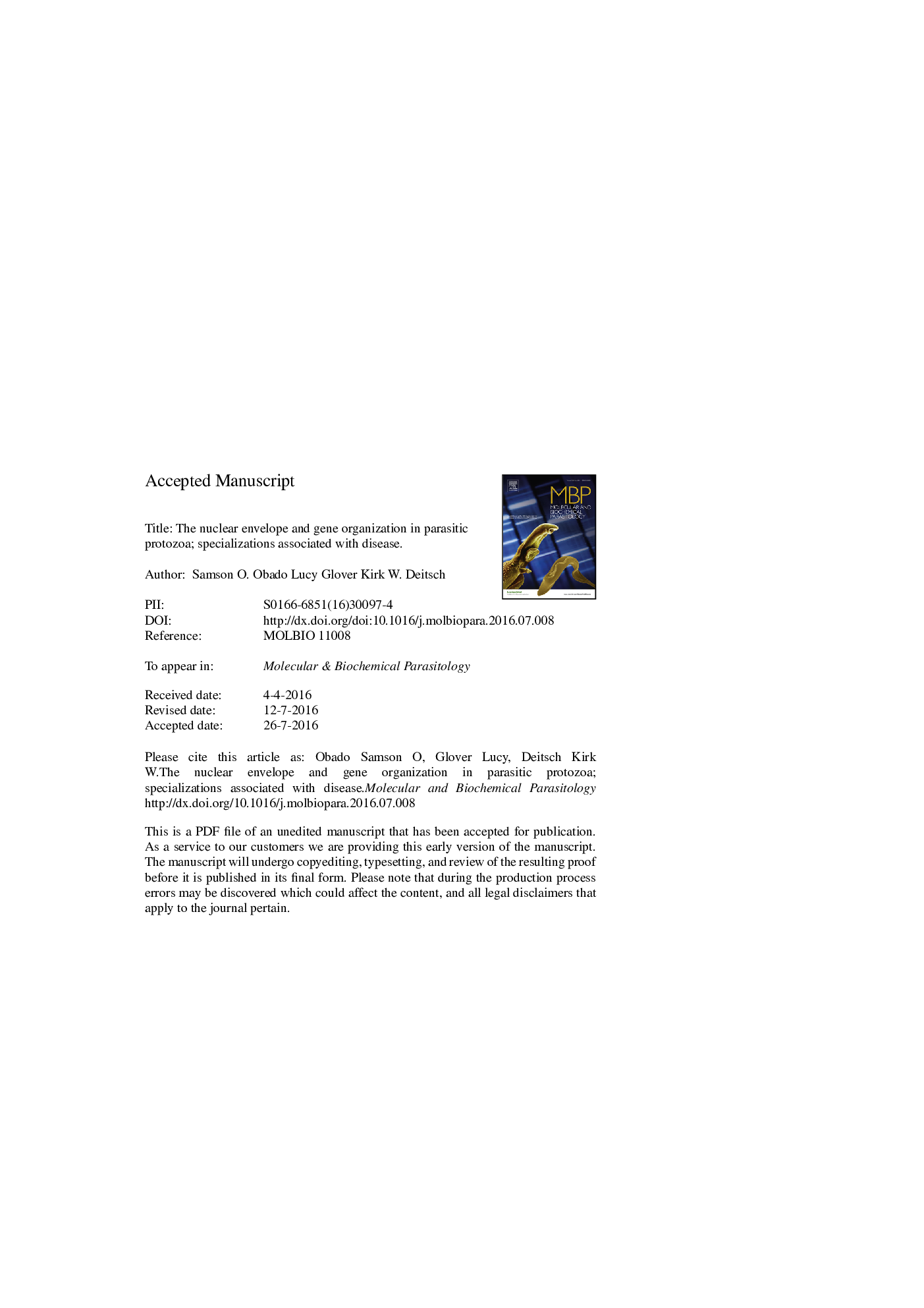| کد مقاله | کد نشریه | سال انتشار | مقاله انگلیسی | نسخه تمام متن |
|---|---|---|---|---|
| 5591809 | 1570644 | 2016 | 25 صفحه PDF | دانلود رایگان |
عنوان انگلیسی مقاله ISI
The nuclear envelope and gene organization in parasitic protozoa: Specializations associated with disease
ترجمه فارسی عنوان
پاکت نامه هسته ای و سازمان ژن در پروتئاز انگلی: تخصص های مرتبط با بیماری
دانلود مقاله + سفارش ترجمه
دانلود مقاله ISI انگلیسی
رایگان برای ایرانیان
کلمات کلیدی
تریپانوزوم، پلاسمودیوم، هسته، رونویسی، ایمنی، هتروکروماتین،
موضوعات مرتبط
علوم زیستی و بیوفناوری
بیوشیمی، ژنتیک و زیست شناسی مولکولی
زیست شناسی مولکولی
چکیده انگلیسی
The parasitic protozoa Trypanosoma brucei and Plasmodium falciparum are lethal human parasites that have developed elegant strategies of immune evasion by antigenic variation. Despite the vast evolutionary distance between the two taxa, both parasites employ strict monoallelic expression of their membrane proteins, variant surface glycoproteins in Trypanosomes and the var, rif and stevor genes in Plasmodium, in order to evade their host's immune system. Additionally, both telomeric location and epigenetic controls are prominent features of these membrane proteins. As such, telomeres, chromatin structure and nuclear organization all contribute to control of gene expression and immune evasion. Here, we discuss the importance of epigenetics and sub-nuclear context for the survival of these disease-causing parasites.
ناشر
Database: Elsevier - ScienceDirect (ساینس دایرکت)
Journal: Molecular and Biochemical Parasitology - Volume 209, Issues 1â2, SeptemberâOctober 2016, Pages 104-113
Journal: Molecular and Biochemical Parasitology - Volume 209, Issues 1â2, SeptemberâOctober 2016, Pages 104-113
نویسندگان
Samson O. Obado, Lucy Glover, Kirk W. Deitsch,
